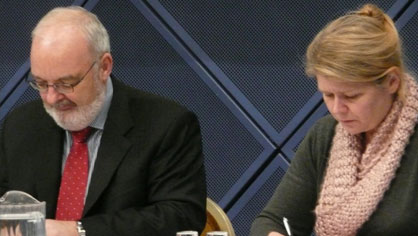12 December 2008
The EU Norway agreement for reciprocal fisheries arrangements in 2009 was agreed on 10th December after a protracted series of negotiations over three rounds in Bergen, Brussels and Oslo.
The TACs for shared stocks in the North Sea are detailed below in annex 1.
General
This year’s negotiations were dominated by the high profile given by Norway to the issue of discards, although having forced the talks to a third round in Oslo, the Norwegians allowed the issue to dissolve into the background. This feeds suspicions that the Norway’s tough talk had more to do with domestic politics than a serious attempt to move forward on the discard issue. As achieving the reciprocal balance displaced discards centre stage, the talks took their familiar form, characterised by long, occasionally all-night sessions.
Discards
The measures to which the EU and Norway committed to in 2009 are as follows:
- A ban on high grading from 1st January 2009 ( high grading is defined as discarding of legally marketable fish when the vessel has quota to cover those catches)
- Vessels entering the Norwegian sector will have to be able to demonstrate to the coastguard that they hold quota entitlements for the species that they expect to catch
- If a vessel, producer organisation or member state has exhausted 90% of its quota allocation of cod by 15th November vessels will be obliged to catch the remainder of its quota using highly selective gear.
- Norway has increased its minimum catch sizes, thereby lowering the threshold for its “move on” policy when vessels are found to have too high catches of juveniles (the new sizes are cod 40cms; haddock 31cms; whiting 32cms)
- An EU Norway working group will meet in the New Year to further work on harmonised technical measures including real time closures and seasonal closures
Cod
Although Norway and the Community both recognise that the North Sea cod stock is recovering rapidly (as a result of a combination of dramatically reduced fishing mortality and improved recruitment) the 30% increase in the TAC represents a compromise position that owes more to presentational considerations than a serious attempt to underpin successful cod avoidance strategies. ICES catch forecasts for next year suggest that a TAC of 44,000 rather than the agreed 28, 798 tonnes could have been justified and this on its own would have substantially reduced discards. Having raised North Sea cod to iconic status, both parties appear to have placed PR considerations above serious attempts to make alternative cod avoidance measures a reality. This is disappointing but not altogether surprising. The EU Council of Ministers endorsed a mandate of a North Sea cod TAC in the range of 25% to 35% but it is doubtful if the Commission ever contemplated agreeing to the higher figure.
It remains to be seen what the practical effect of the ban on high grading and other cod measures will be. In particular, it only became clear towards the end of the negotiations that the ban on high grading applied to a wider range of stocks than cod. Much detail remains to be resolved.
Long Term Management Plans
A growing feature of the EU Norway negotiations is the importance of long term management plans. This year the TACs for haddock, saithe, plaice, and herring were all set in relation to long term management plans, albeit that for plaice Norway accepts the TAC but doesn’t yet agree to the full provisions of the EU’s Flatfish Management Plan. The advantage to LTMPs is that they bring stability and a high level of predictability to TAC levels.
Inter-Year Flexibility
Norway agreed that up to 10% of unutilised haddock could be transferred into the following year but resisted the same facility for saithe.
Whiting
A 15% reduction in the TAC for whiting was agreed against the background of uncertainties in the assessment, ICES advice of a 67% cut, and Norway’s insistence that the TAC be linked to progress on discards. The selectivity work in the member states will continue in 2009.
The Balance
A combination of factors made achieving the balance between what the EC gives in return for what it receives more challenging this year. Norway’s restricted “shopping list” which focuses heavily on the pelagic stocks, along with the reduction of blue whiting availability, in particular added to the strains.
North East Arctic Cod
An increase in the TAC for North East Arctic cod and the above-mentioned stresses in finding the balance, led to the guaranteed 2.9% of the NE Arctic cod being paid in two tranches, with 1800 tonnes to be held back to be made available when the EU has identified appropriate currency in the first part of next year.
Annex I
North Sea Joint Stock TACs (Tonnes)
2008 TAC
Transfers
2009 TAC
Transfers
% Change
Cod
22,152
–
28,798
–
+ 30%
Haddock
46,444
2,600
42,110
1,000
– 9%
Whiting
17,850
–
15,173
–
– 15%
Plaice
49,000
3,430
1,000
+ 13%
Saithe
135,900
–
125,934
–
– 7%
Mackerel
48,556
–
63,826
–
+ 31%
Herring
201,227
–
171,000
–
– 15%
Norway Others Rollover
Ling & Tusk Rollover
Norwegian Anglerfish reduced by 60 tonnes to 1,550 tonnes

